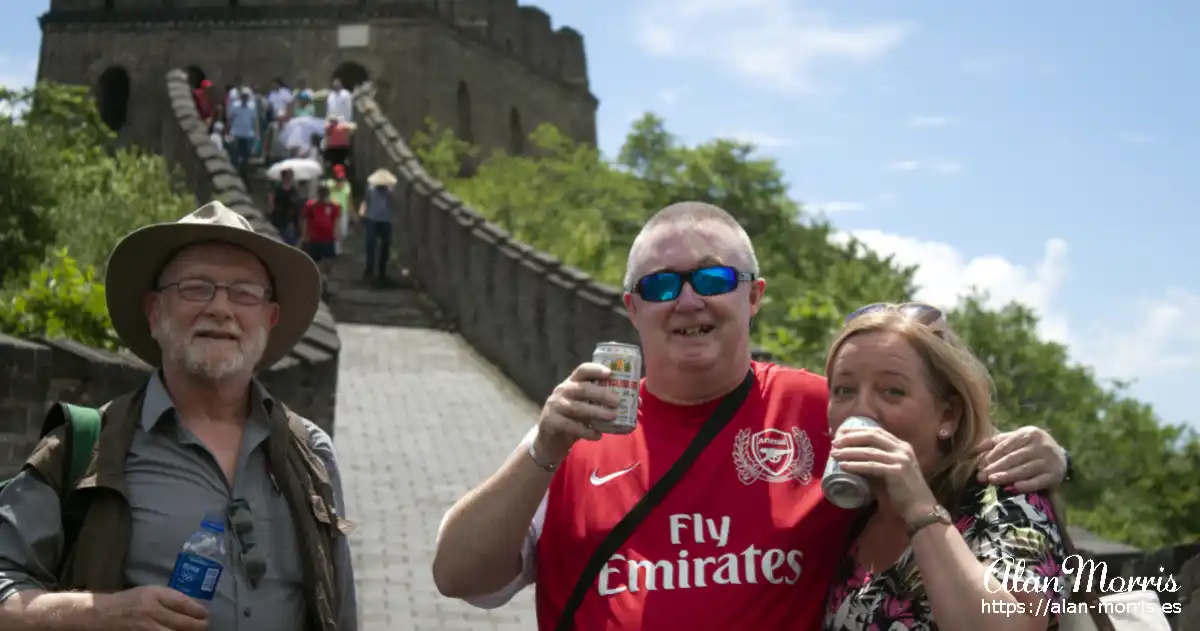Today was why I came to China. I wanted to walk on the Great Wall of China and cross this off my bucket list.
At 8:00 am, we boarded the coach for our day; the first port of call would be the Great Wall of China before taking a rickshaw tour of the old part of Beijing.
The part of the Great Wall we visited was at Mutianyu, around a 1½-hour drive from the hotel. On arrival, we parked in a car park and walked a short but very steep walk through market stalls to the chairlift to the top of the Great Wall. The chairlift took us up quickly and smoothly, and we soon stood on top of the Great Wall of China; the view was amazing.
In small groups, we set off walking; some of the group set off at an incredible pace, trying to reach the furthest point in our short time. After walking to the first tower, I realised how steep the steps were and descended the steep first set of steps on my bum to avoid missing a step and breaking my neck. After the first descent, the steps were a lot easier and with Tracy and Mel, I managed to walk to the third tower, stopping at different points for photos.
As we got back down from the third tower, we were met by Michael, who we waited for whilst he ascended to the tower for the view. We walked back, passing through the second tower and bought a couple of beers from a seller at the top of the wall. We posed for a few photos and then returned to the tower we had started at to catch the cable car back down.
After the return journey in the cable car, the whole group met up in a Subway, had a sandwich and then returned to the coach for the trip back to Beijing.
Great Wall of China Photos.
These are my photos from my visit to the Great Wall of China. Click on any image to see a larger version with a description.
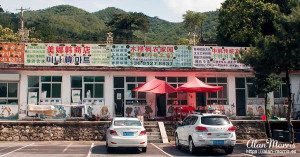



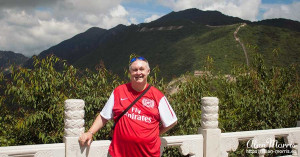
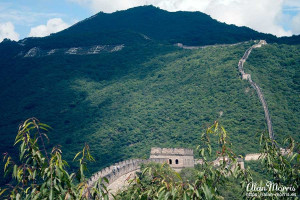
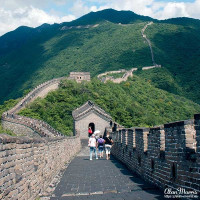

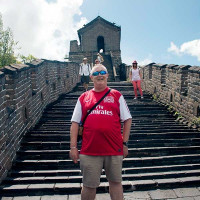










About the Mutianyu section of the Great Wall of China.
Mutianyu is a section of the Great Wall of China located in Huairou District within the city limits of Beijing, 70 kilometres northeast of the city's centre. The Mutianyu section of the Great Wall is connected with Jiankou in the west and Lianhuachi in the east. As one of the best-preserved parts of the Great Wall, the Mutianyu section was the northern barrier defending the capital and the Imperial tombs.
Rickshaw tour of Beijing Hutongs.
On our return to Beijing, most of the group continued to the older part of the town, the Hutongs, and took a Rickshaw tour around the old district of Beijing. We were soon at a house, and the family who lived there showed us around. It was fundamental but very nice, each room belonging to a different part of the family or being shared by others. The family that lived here even rented a room out to tourists.
We were soon outside, taking a short walk through this district before meeting with our Rickshaw for a ride back to our coach. On our walk, I turned a corner to come face to face with a fellow Gooner. This Chinese Gooner, who didn't speak English, was soon posing with me for a photo as I, too, was wearing my Arsenal shirt. After this quick photo opportunity, we continued to where we were to meet our rickshaw drivers.
Trouble was afoot, though, and while the rest of the group's rickshaw drivers turned up and transported them back to the coach, our driver had gone AWOL. He did turn up but with a full load and went as quickly as he came. After the rickshaw tour owner made some calls, a new rickshaw was soon made available to us, and we quickly chased down the rest of the group. After a few near misses, we were soon on the coach and on our way back to the hotel.
About Hutongs.
Hutongs are narrow streets or alleys commonly associated with northern Chinese cities, especially Beijing. In Beijing, hutongs are alleys formed by lines of Siheyuan, traditional courtyard residences. Many neighbourhoods were formed by joining one Siheyuan to another to create a hutong, and then joining one hutong to another. The word hutong is also used to refer to such neighbourhoods.
About Siheyuan.
A Siheyuan is a historical residence commonly found throughout China, most famously in Beijing and rural Shanxi. Throughout Chinese history, the Siheyuan composition was the basic pattern used for homes, palaces, temples, monasteries, family businesses, and government offices. A spacious Siheyuan would be occupied by a single, usually large and extended family, signifying wealth and prosperity. Today, remaining Siheyuan are often still used as subdivided housing complexes, although many lack modern amenities.
Beijing Hutongs Photos.
These are my photos from my visit to the Beijing Hutongs. Click on any image to see a larger version with a description.
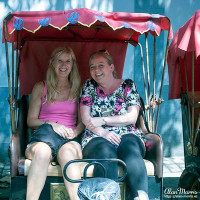
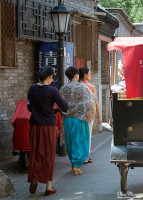



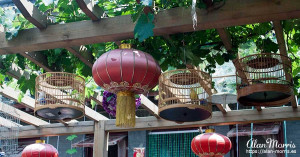
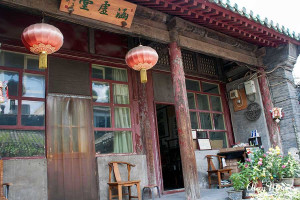
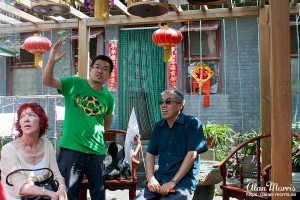
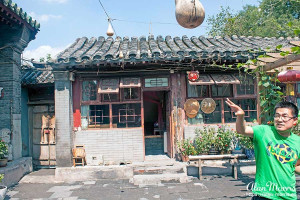

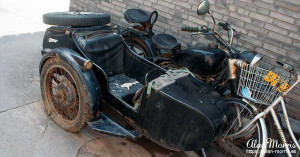

















Back at the Traders Hotel.
Dinner was in the hotel restaurant and was served on a Lazy Susan. The food was served, and we all laid claim to whichever parts of it we fancied. It soon became clear that the drinks in the hotel bar were expensive, so a group of explorers, headed by Judith, was sent out in search of lower-priced drinks. Judith soon came back with cheap beer and a full report on how to locate cheap alcohol.
